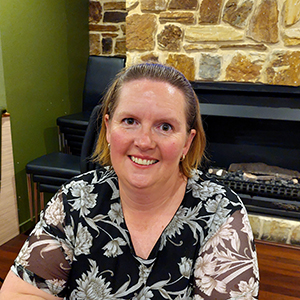South Australians are not FAST enough
A new survey has revealed greater awareness is needed in South Australia of the most common signs of stroke to save lives and reduce stroke-related disability.
It’s estimated more than 2,000 people will have a stroke this year for the first time in South Australia.
Worryingly, the Stroke Foundation survey found 41 percent of South Australians could not name any of the three most common signs.
These signs are highlighted in the acronym F.A.S.T. - Face (facial droop), Arms (inability to lift arms) and Speech (slurred speech). The T stands for time to remind people that after seeing any of the signs of stroke, they need to immediately call triple zero (000) for an ambulance.
Stroke Foundation South Australia State Manager Luke Hays said the survey indicated there is still a long way to go to ensure more residents learn, and can benefit from, this potentially life-saving message.
“I have heard many stories about incredible outcomes from stroke because someone knew the F.A.S.T. test and called triple zero (000) immediately,” Mr Hays said.
“Stroke is always a medical emergency. When stroke strikes, there is no time to lose. Around 1.9 million brain cells can die every minute. Prompt medical treatment can stop this damage.”
“If you can recognise a stroke, you can take the vital first step in getting a person, often a loved one, the emergency medical help they need. This provides the best chance of a good outcome.”
People are encouraged to use the F.A.S.T test if they suspect a stroke:
• Face: Check their face. Has their mouth drooped?
• Arms: Can they lift both arms?
• Speech: Is their speech slurred? Do they understand you?
• Time is critical. If you see any of these signs call triple zero (000) straight away.
The Stroke Foundation’s F.A.S.T. awareness survey also revealed only 26 percent of South Australians can recognise two of the three most common signs of stroke, with a worrying gap in people’s knowledge about the inability to lift both arms.
“Only eight per cent of South Australians identify arm weakness as a sign of stroke, yet it is one of the most common signs,” Mr O’Toole said.
“That is why we need to keep sharing the F.A.S.T message widely. It not only helps people remember the key signs to look for but prompts them to act as quickly as they can at the first sign.”
O’Halloran Hill resident Jasmine Cowen is grateful a workmate recognised she was having a stroke in 2017 when she lost control of an arm and leg and began slurring her words.
“My colleague knew the signs of stroke and wasted no time getting the first aid officer and calling triple zero (000). I owe my life to their quick thinking, the paramedics and doctors,” Jasmine said.
“I’m a mum of two and was only 37 years old at the time. I am proof stroke can happen at any age. I now share the F.A.S.T. message with all of my family and friends. Learning and sharing this message is a simple action that could save a life.”
F.A.S.T. education augments good stroke treatment by cutting the time to get to emergency care. Stroke Foundation will continue to call on the state government to build on the work that has been done in stroke treatment and care in South Australia, particularly in Telestroke, by investing in community F.A.S.T. education.
Stroke Foundation also delivers F.A.S.T. signs of stroke awareness in eight language groups; Greek, Italian, Mandarin, Vietnamese, Arabic, Cantonese, Hindi and Korean. This is part of a broader consumer awareness and education program funded by the Australian Government. Targeted resources are also available for First Nations peoples.
Most strokes display one or more of the F.A.S.T. signs. Other signs are here.
The annual F.A.S.T awareness survey was conducted for Stroke Foundation by YouGov. The more than 5,200 Australians who participated included a weighted representation from every state and territory.

Image: Survivor of stroke Jasmine Cowen from Adelaide credits the F.A.S.T. message for helping to save her life.
Key Findings, South Australia
• 41 percent cannot name any of the most common signs of stroke.
• 26 percent recognise two of the F.A.S.T. signs of stroke.
• 77 percent incorrectly identified signs of a stroke, even when given options to choose from, confusing them with heart attack symptoms like chest pain.
• 80 percent would call triple zero (000) for stroke symptoms.
